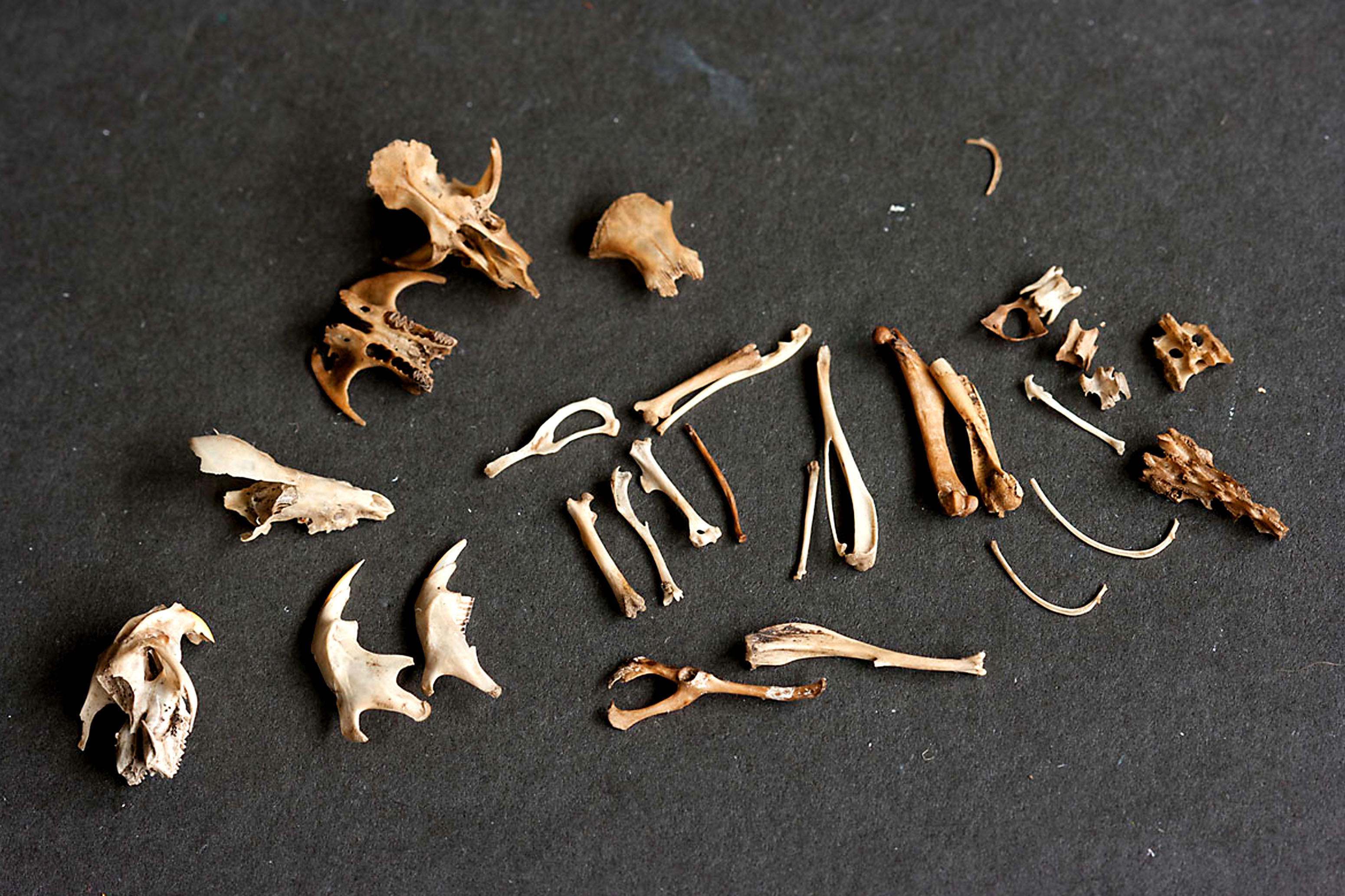Dissect an owl pellet
Dissect an owl pellet while wearing gloves, using tweezers and a magnifying glass to find and identify tiny bones, recording findings and exploring food chains.



Step-by-step guide to dissect an owl pellet
Owl Hunter | National Geographic
Step 1
Put on your disposable gloves so your hands stay clean and safe.
Step 2
Set the owl pellet on the tray or white paper to give yourself a clean workspace.
Step 3
Look at the pellet with the magnifying glass to notice lumps and possible bone shapes.
Step 4
Use the tweezers to gently tease apart the pellet starting from the edge to reveal hidden pieces.
Step 5
Use the small paintbrush or a toothpick to sweep away fur and dust so the tiny bones show clearly.
Step 6
Pick out each bone with the tweezers and lay them in a neat line on the paper.
Step 7
Examine each bone closely with the magnifying glass to see its size and shape.
Step 8
Compare each bone to the bone identification chart to find the correct bone names.
Step 9
Count how many of each bone you found and write these numbers in your notebook.
Step 10
Draw a simple food chain in your notebook showing the owl, its prey, and where the prey gets its food.
Step 11
Put all leftover pellet material into the sealable plastic bag for safe disposal.
Step 12
Remove your gloves and throw them away as instructed by your adult supervisor.
Step 13
Wash your hands with soap and water for at least 20 seconds to stay clean.
Step 14
Share your finished bone layout and notes on DIY.org so others can see your discovery.
Final steps
You're almost there! Complete all the steps, bring your creation to life, post it, and conquer the challenge!


Help!?
What can we use instead of disposable gloves, a magnifying glass, or tweezers if we don't have them?
Use clean zip-top baggies slipped over hands instead of disposable gloves, a smartphone camera with zoom or reading glasses in place of the magnifying glass, and a clean sewing needle, paperclip, or blunt toothpick instead of tweezers when you gently tease apart the pellet.
Why might bones be hard to separate or get lost, and how can we prevent that during the dissection?
Work over the tray or white paper and follow the step to start teasing from the pellet edge with tweezers while using the small paintbrush or toothpick to sweep away fur so tiny bones stay visible and can be laid in a neat line.
How can we adapt this owl pellet activity for younger children or older kids?
For younger children have an adult pre-open the pellet and let them pick and count larger bones with larger tweezers or blunt sticks, while older kids should compare each bone to the bone identification chart, record exact counts in the notebook, and draw a more detailed food chain.
What are some ways to extend or personalize the dissection after arranging the bones?
After you place bones in a neat line and identify them, glue or tape them to cardstock with labels from the bone identification chart, photograph the layout to share on DIY.org, and compare counts from multiple pellets to make a chart in your notebook.
Watch videos on how to dissect an owl pellet
You’ve Never Seen an Owl Species That Does This
Facts about wildlife biology and food chains
🔬 A single owl pellet can contain bones from multiple prey — sometimes even whole tiny skulls you can identify!
🧤 Always wear gloves and use tweezers: pellets can carry bacteria and tiny parasites, so handle them safely.
🦴 Identifying skulls, jawbones, and vertebrae from a pellet helps you figure out what the owl ate and map its place in the food web.
🌿 Many pellets show local diets — voles, mice, and shrews are among the most common prey in many habitats.
🦉 Owl pellets are regurgitated clumps of fur, bones, and insect parts that owls cough up because they can't digest them.
How do you dissect an owl pellet safely and effectively?
What materials do I need to dissect an owl pellet?
What ages is owl pellet dissection suitable for?
What are the benefits and safety tips for dissecting owl pellets?


One subscription, many ways to play and learn.
Only $6.99 after trial. No credit card required



